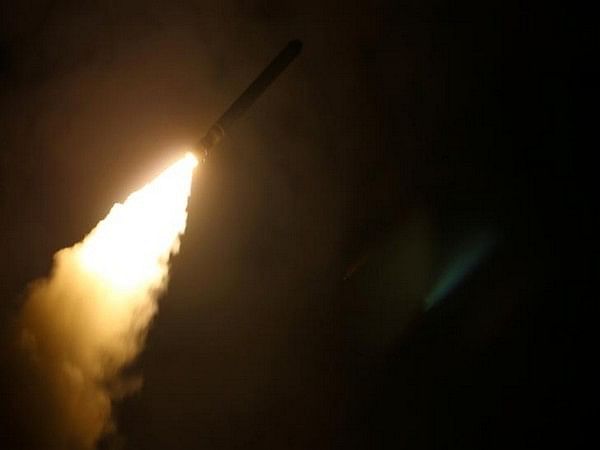Beijing [China], July 22 (ANI): China’s People’s Liberation Army recently tested an advanced Multiple Launch Rocket System (MLRS) at an altitude of more than 5,300 metres in the Xinjiang Region close to the Indian border that could hit critical Indian military bases.
China’s state media reported that China is likely to deploy the PHL-16 MLRS on the Sino-Indian border.
China’s PLA conducted a live-fire training assessment for a new type of rocket mine-laying vehicle, in the Xinjiang Region close to the Indian border of the Xinjiang Military Region. The multiple launch rocket system is expected to be deployed in the Himalayas, local media reported.
On Wednesday, China’s PLA carried out a military exercise with attack helicopters over Pangong Lake, a video telecast by the state media network CCTV showed.
The 33-second video was released hours after the two countries concluded the 16th round of Corps Commander-level talks held at the Chushul-Moldo border meeting point on the Indian side of the Line of Actual Control (LAC) between India and China held on Sunday.
The video shows the army aviation brigade attached to the PLA Xinjiang Military Command carrying out an exercise over the world’s highest saltwater lake, Pangong Lake, at an altitude of almost 4,350 metres.
China’s state media reported that Z-10 attack helicopters joined the drills for the first time, unlike the past when only transport helicopters carried border defence troops for patrol missions.
Meanwhile, India and China held the 16th round of Corps Commander level talks on Sunday at the Chushul-Moldo border meeting point on the Indian side.
The two sides held talks for disengagement along the Line of Actual Control (LAC) in Eastern Ladakh and the Indian side was led by Fire and Fury Corps Commander Lt Gen A Sengupta.
They had a detailed exchange of views in keeping with the guidance provided by the State Leaders to work for the resolution of the remaining issues at the earliest.
The two sides reaffirmed that the resolution of remaining issues in eastern Ladakh would help in the restoration of peace and tranquillity along the Line of Actual Control (LAC) in the Western Sector and enable progress in bilateral relations.
The two sides also agreed to maintain the security and stability on the ground in the Western Sector in the interim. They agreed to maintain dialogue via military and diplomatic channels to reach a mutually acceptable resolution of the remaining issues at the earliest.
On Monday, New Delhi and Beijing issued a joint statement, saying both sides had agreed to maintain the “security and stability” on the ground in the Western Sector along the LAC.
“The two sides agreed to stay in close contact and maintain dialogue through military and diplomatic channels and work out a mutually acceptable resolution of the remaining issues at the earliest,” the statement added.
They said that it is likely that the Indian side could move from the friction point southeast towards the Karam Singh Hill feature while the Chinese could move north towards the point 5170 hill feature located on their side of the LAC.
It is emerging that both sides could possibly see disengagement of troops from Patrolling Point 15 in the near future.
Since May 2020, when the Chinese military tried to aggressively change the status quo on LAC in eastern Ladakh, both sides have been deployed opposite each other near Patrolling Point 15 which has emerged as a friction point.
India has been looking at complete disengagement of troops from the friction points and moving back troops to the pre-May, 2020 situation in the entire sector.
The last disengagement of troops on the LAC took place a year ago which led to the limited resolution of the standoff at Patrol Point 17A in Gogra.
Delhi and Beijing reached an agreement in February 2021 to disengage troops from the 135-km Pangong Lake, creating buffer zones until all outstanding border issues are resolved.
Over 50,000 soldiers have been stationed since 2020 at forwarding posts along the LAC with advanced weapons to prevent a change in the status quo.
The Indian Army responded strongly to the Chinese aggression in 2020 and moved multiple formations toward the Ladakh sector to bolster its preparedness.
The Army has now allotted the Mathura-based 1 Strike Corps to the northern borders while formations from all around the sector are holding their summer exercises there to keep a check on the People’s Liberation Army’s activities across the Line of Actual Control. (ANI)
This report is auto-generated from ANI news service. ThePrint holds no responsibility for its content.






